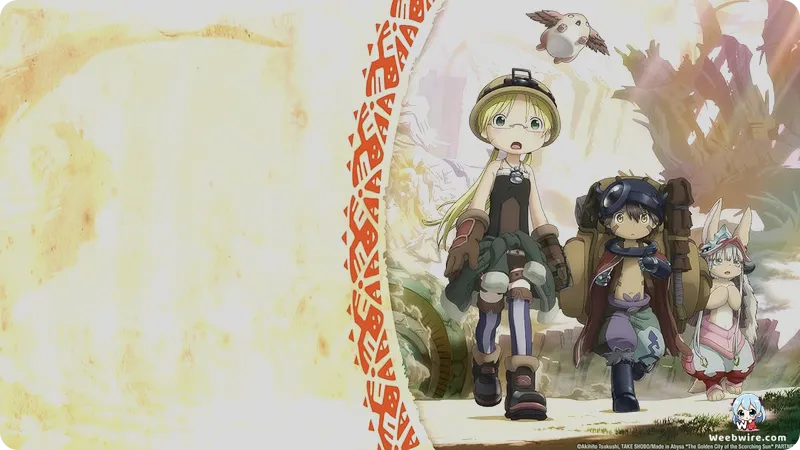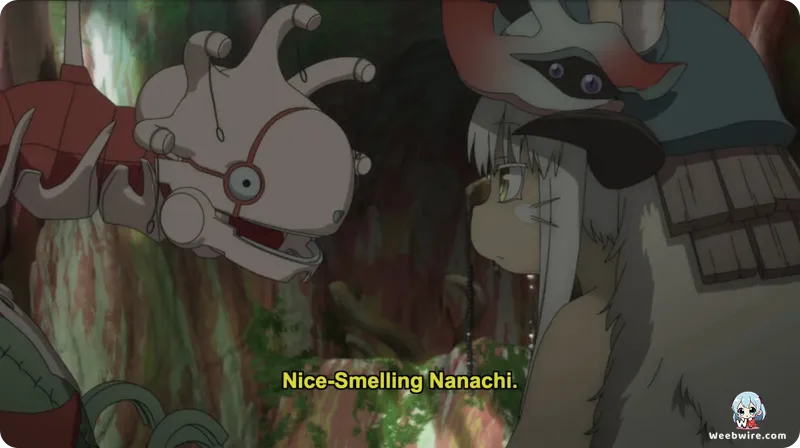Unveiling the Horrors and Wonders of Made in Abyss: The Golden City of the Scorching Sun

Prepare to delve deeper into the chillingly beautiful depths of the Abyss with the second season, Made in Abyss: The Golden City of the Scorching Sun. This critically acclaimed series continues its legacy of blending profound mystery with visceral horror, cementing its status as a groundbreaking masterpiece in the anime landscape. Far from a simple continuation, this arc plunges viewers into the treacherous sixth layer, ominously known as the 'Capital of the Unreturned,' unveiling an array of startling concepts and unforgettable characters that are as captivating as they are unsettling.
The Golden City of Ilblu
At the heart of this season's dark wonders lies Ilblu, the so-called 'Golden City.' This is no ordinary settlement; it is a living, breathing, grotesque entity, horrifyingly birthed from the tragic transformation of Irumyuui, a member of the ill-fated Ganja exploration team. The entire village functions as a sentient organism, perpetually shifting and evolving, embodying the Abyss's raw, transformative power. Its economic system is equally bizarre and unsettling: residents engage in a chilling exchange of 'value' a currency that often manifests as body parts, cherished memories, or even one's very identity. This visceral transaction powerfully underscores the Abyss's relentless demand for sacrifice and adaptation.
The Narehate: Transformed Inhabitants
The inhabitants of Ilblu, known as Narehate, are beings grotesquely yet often endearingly transformed by the Abyss's curses. Each Narehate carries a profoundly tragic backstory, having once been human. Their unique transformations are not random; they are a direct consequence of their interactions with the Abyss's curses, reflecting their deepest desires or fears. The sheer diversity in their designs, ranging from the adorably innocent to the utterly monstrous, is a testament to manga author Akihito Tsukushi's unparalleled creativity and his bold willingness to challenge traditional character design, masterfully balancing cuteness with existential dread.

Faputa: Princess of the Narehate
Central to this season's narrative is Faputa, the enigmatic 'Princess of the Narehate' and the 'Irredeemable.' Her very existence is a powerful testament to the Abyss's capacity to forge beings of immense power and intricate purpose. Faputa is not merely a creature of instinct; she possesses fierce loyalty, an unwavering drive for revenge for her 'mother' Irumyuui, and a deep, albeit distorted, comprehension of her role within the Abyss's ecosystem. Her unique vocalizations and almost childlike mannerisms, juxtaposed with her devastating power and primal urges, establish her as one of the series' most memorable and paradoxical characters, embodying the Abyss's beautiful yet terrifying essence.
The Ganja Exploration Team's Harrowing Saga
The harrowing saga of the Ganja Exploration Team, meticulously revealed throughout the season, forms another pivotal and emotionally resonant layer. Their initial descent into the Abyss, driven by noble aspirations and the pursuit of a fabled 'Golden City,' slowly devolves into a desperate struggle for survival against the Abyss's relentless curses. The profound bond between Vueko, one of the Ganja survivors, and Irumyuui, provides the emotional core of this arc, showcasing the series' remarkable ability to evoke deep empathy for characters enduring unimaginable suffering and transformation, illustrating the ultimate cost of venturing into the unknown.
Artistry and Soundscape
Akihito Tsukushi's distinctive art style remains a cornerstone of Made in Abyss's profound appeal. His masterful ability to render adorable, almost childlike characters alongside scenes of extreme body horror and visceral gore is a deliberate artistic choice that intensely amplifies the series' unsettling atmosphere. This stark contrast compels viewers to confront the brutal realities of the Abyss without the comfort of conventional dark fantasy aesthetics. Kinema Citrus, the animation studio behind this adaptation, has garnered widespread acclaim for its faithful and uncompromising recreation of Tsukushi's vision, demonstrating exceptional skill in translating the manga's intricate details and disturbing imagery onto the screen, pushing the boundaries of what is typically depicted in anime.
Complementing the stunning visuals, the series' incredible soundscape, composed by Kevin Penkin, plays an indispensable role in defining its unique atmosphere. For The Golden City of the Scorching Sun, Penkin's score expertly navigates the emotional spectrum, from hauntingly beautiful melodies that underscore the Abyss's grandeur to dissonant, anxiety-inducing tracks that accompany its horrors. The music is not merely background; it is an active participant in the storytelling, elevating every moment of wonder, despair, and terror. His unique blend of orchestral, electronic, and vocal elements creates an auditory experience as distinct and memorable as the visuals themselves.
Conclusion
Made in Abyss: The Golden City of the Scorching Sun stands as a powerful testament to uncompromising storytelling and masterful world-building. It challenges its audience with profound philosophical questions about humanity, sacrifice, and the relentless pursuit of knowledge, regardless of the cost. The series' willingness to explore the darkest facets of existence, coupled with its breathtaking artistry and emotional depth, has cemented its status as a landmark in dark fantasy anime, leaving an indelible mark on all those brave enough to descend into its depths.
Credits
Made in Abyss: The Golden City of the Scorching Sun
Author
Akihito Tsukushi
Cover Art
Akihito Tsukushi
Studio
Kinema Citrus
Publisher
Takeshobo
Producers





